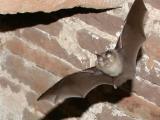Mar 14, 2013 (CIDRAP News) – Investigation findings on a family cluster of novel coronavirus (NCoV) infections in Britain indicate some SARS-like qualities but a wider disease spectrum and other differences, according to a report today in Eurosurveillance.
Though earlier clusters were reported among hospital staff in Jordan and a family in Saudi Arabia, Britain's three-patient cluster is the first to be fully documented and published.
An investigation team with the UK Health Protection Agency (HPA) wrote that the index patient is a 60-year-old man who got sick shortly before returning to the United Kingdom after visiting Pakistan and Saudi Arabia. As of Mar 1 the man is still hospitalized and on extracorporeal membrane oxygenation (ECMO). Earlier tests found that he was co-infected with 2009 H1N1 influenza.
HPA officials said the man traveled in Pakistan for 5 weeks, then made a pilgrimage to Mecca and Medina during his 8-day stay in Saudi Arabia. He had no history of contact with animals or to people with severe respiratory infection in the 10 days before he got sick.
Other cases include a 38-year-old male household contact of the man who died from a severe NCoV infection on Feb 17 and a 30-year-old female family member who lived in a different household and became ill with a mild form of the illness after visiting the index patient three times in the hospital. Neither of those patients had a recent travel history, and the HPA said they were likely infected in the United Kingdom.
Today's report said the man who died had an underlying malignant condition and had been receiving treatment that likely resulted in immunosuppression. Tests found type 2 parainfluenza virus as well as NCoV in his nose and throat swabs. The woman recovered from her illness after 9 days, and tests also detected type 2 parainfluenza virus in her sputum sample, according to HPA investigators.
Extensive contact tracing of all three patients so far has revealed no other cases, though several had other respiratory viruses. Investigators identified 103 close contacts of the index case, including 19 who sat near him on airline flights. Eighteen contacts were identified for the man who died, and 25 of the woman's close contacts were evaluated.
Paired serum samples are being obtained from all patients' household and healthcare contacts, regardless of symptoms, to test for evidence of NCoV infection, according to the report.
Findings from all three patients suggest evidence of person-to-person transmission, but spread appears to be limited, consistent with the other two reported clusters.
The HPA highlighted the co-infection in all three patients, noting that the findings raise questions about how other infections might impact disease severity and its spread. The other illnesses may have delayed the NCoV diagnosis, and the cases show how important it is to consider NCoV in atypical cases, such as the index patient's poor response to antiviral drugs before his NCoV infection was detected.
Ever since the first NCoV cases emerged and scientists characterized the virus, health officials have emphasized that the disease isn't like SARS (severe acute respiratory illness, which caused more than 8,000 cases and about 900 deaths globally a decade ago). The HPA scientists, however, said in the report that some aspects of NCoV patterns resemble SARS: severe respiratory illness and incubation period.
The presence of a milder case, though, suggests a wider disease spectrum that will become more clear once the results of serological tests are known, they wrote.
Analysis of the three cases has allowed officials to make preliminary estimates of the disease's incubation period (1 to 9 days) and serial intervals (13 to 14 days). The HPA said that although the information is extremely limited, the upper incubation range is more similar to SARS than seasonal coronavirus infection.
"It is therefore not possible to ascertain with certainty whether the index case acquired his infection in Saudi Arabia or in Pakistan, although previous nCoV cases have been linked to the Middle East," they wrote.
The group said their findings emphasize the importance of vigilance for and rapid investigation of severe respiratory infections in residents of and travelers to the Middle East, and more work is needed to determine if NCoV is circulating elsewhere.
WHO working on guidance updates
In other NCoV developments, the World Health Organization (WHO) said today in an update that it is reassessing its guidance in light of new information, but also repeated that the virus doesn't spread easily. "Case definitions, surveillance recommendations, and other guidance are undergoing continuous reassessment in light of new information and reports of new cases," the agency said.
Three fatal cases have been reported in Saudi Arabia since late February, including one this week. In all, 15 confirmed NCoV cases with 9 deaths have been confirmed since the virus was identified last September.
In other comments, the agency said that in testing patients for the virus, lower respiratory specimens should have priority, since they are more likely to yield accurate results. The WHO also has published guidance on clinical management of NCoV cases.
News editor Robert Roos contributed to this story.
HPA UK Novel Coronavirus Investigation Team. Evidence of person-to-person transmission within a family cluster of novel coronavirus infections, United Kingdom, February 2012. Eurosurveillance 2013 Mar 14;18(11):[Full text]
See also:
Mar 14 WHO update

















